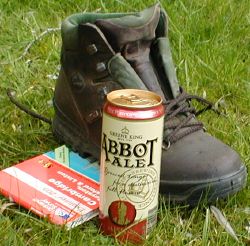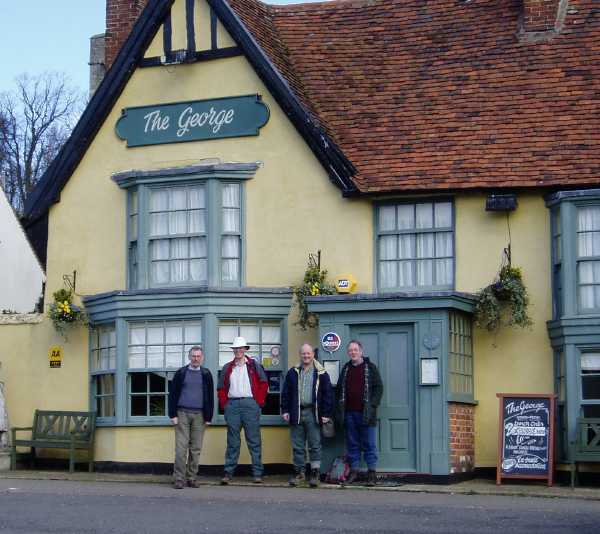
THE GEORGE, CAVENDISH
SUFFOLK
INDEX
_______________
We stayed at The George, Cavendish in March-April 2006

The
George has undergone change in management and marketing in recent months.
Our rooms were very pleasant, the food was excellent, though pricey, and
there was no draught beer.
It seems The George has become a restaurant with bedrooms rather than
the pub we expected. Without draught beer, we reasoned, it can hardly
call itself a gastro pub and with beer at £3.20 per bottle you wouldn't
drink there regularly.
Service was excellent, from a well mannered and helpful team of young
people, but The George may find it difficult to get enough people willing
to stay in rooms up to £95 per night b&b (we paid the previous
rate, having booked early) and upper end food prices.
In summary, a very pleasant weekend, but you could save money eating at The Bull (read the Good Pub Guide Entry) a few doors away where there is more traditional pub fare at a fraction of the price in a jolly local atmosphere.
Cavendish with its village green, pastel tinted cottages and flint church
Suffolk Villages
These are rural centres far from major roads and evidently posperous, from the flinty mediaeval churches rearing up massively from gentle rolling hills to the fashionable and over-priced gastro-pubs frequented by the weekenders from the city.
The grand eagle lectern of Cavendish is outstanding. The churches at Clare and Lavenham are equally grand, despite the Puritan vandalism of Mr Dowsing who destroyed some of the finer features including roof bosses and all the glass in the 17th century.